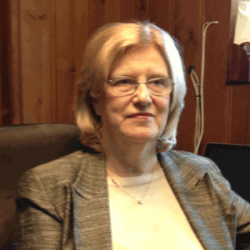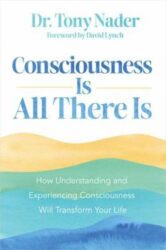Flannery O’Connor and Praise of God

Flannery O’Connor was a twentieth century writer of essays and fiction. Her stories and novels were published in the mid twentieth century to some acclaim. She passed away before her fortieth birthday, but a journal she kept between 1946 and 1947 while she was a student in Iowa was preserved, recently found among her papers in Georgia, and published. The notebook was filled with a series of observations and entreaties to God, and is a stunning work that represents her devotion, humor, and exquisite intellect.
O’Connor held the conviction that the created world is charged with God. She wrote,
“Dear God, I cannot love Thee the way I want to. You are the slim crescent of a moon that I see and my self is the earth’s shadow that keeps me from seeing all the moon. The crescent is very beautiful and perhaps that is all one like I am should or could see; but what I am afraid of, Dear God, is that my self shadow will grow so large that it blocks the whole moon, and that I will judge myself by the shadow that is nothing.”
This young writer, so ardent in her desire for the full appreciation and love of her creator, saw her own individuality as a block to this divine realization. She had natural intuition that there is a greater force in the universe than the strivings of mankind, and she steadfastly gave all credit for all individual creativity and progress to that force, which she held to be personified as the Creator and maintainer of all.
Flannery O’Connor was raised as a Catholic, lectured on faith, and wrote book reviews for two Catholic newspapers. Her reviews quite often confronted theological and ethical notions in books written by the most serious contemporary theologians. Nonetheless, she berated herself for not having the right knowledge of how to pray properly in order to realize God. She wrote,
“I do not mean to deny the traditional prayers I have said all my life; but I have been saying them and not feeling them. My attention is always very fugitive.”
But with her natural profound intuitive sense, the writer knew that God was available to her, locatable at a level more deep within than surface experiences. She wrote,
“Please help me to get down under things and find where You are.”
Dissatisfied with her lack of spiritual connection to the deepest love and intelligence permeating the world, O’Connor wrote in her journal, with her signature humor and self-deprecation,
“Oh Lord, I am saying, at present I am a cheese, make me a mystic, immediately.”
On the topic of women and spirituality, some researchers contend that women are more likely to be spiritually inclined because of an inherent tendency toward connecting—this manifests in attachment to family, friends, and community, but is a deeper phenomenon born of intuition of our eternal connectedness to something perfect and divine—something greater than our intellect can grasp.
If a woman is wearing green-tinted glasses, the world appears green to her. If she is wearing blue-tinted glasses, the world is blue. To the spiritually oriented or religious person, the life flowing within everything is God, or the Holy Mother, or Spirit, or the Deity. To a Unified Field physicist, the source of the created world is an unmanifest field of pure infinite unified potentiality that manifests itself in an orderly, intelligent, purposeful manner as infinite diversification. In each case, the common factor is that something permeates everything and all of us—we are connected to it, and through it, to each other.
O’Connor wrote,
“I do not know you God because I am in the way. Please help me to push myself aside.”
Let’s consider this entreaty in the light of the mechanics of the TM technique; during the Transcendental Meditation technique, the conscious mind transcends—goes beyond—the ever-changing field of individual concrete experience to subtler levels of experience, and finally to the transcendental field of unbounded silent unity. The relief derived from this simple direct experience is palpable, both to the mind and the emotions, for any seeker such as Flannery O’Connor. There is no consideration of an intellectual or philosophical notion—there is only the innocent perception of the wholeness of Self in the eternal.
It was recorded in the old testament that God said to David, Be still and know that I am God.: Stillness, this inner silence, is the foundation in the infinite level of the Self from which we can –“know that I am God.” So many saints, sages, prophets and wise souls through the ages have referred to the state of inner silence as the foundation for knowing the divine.
The Prophet Muhammad said,
“Whoever knows himself, knows his Lord”
Anandamayi Ma was a great saint in our time. Anandamayi can be translated as “joy-permeated”. This name was given to her by her students in the 1920s to describe her habitual state of divine joy and bliss. She said: God is everywhere, He pervades everything. He, whom you think you have sought in vain for so many years, is not apart from you. Just as a man cannot be without bones, blood, flesh and skin, so the One is present everywhere, at all times, interwoven with everything that exists.
The great poet, Rabindranath Tagore, wrote “This is the ultimate end of man; to find the One which is in him, which is his truth, which is his soul; the key with which he opens the gate of the spiritual life, the Heavenly Kingdom.”
To transcend the thinking mind, to transcend the boundaries of our individuality, as we do in TM practice, to dwell in the silence of the Self, this is the golden key. Maharishi described to us the difference between this experience of innocent communion and a prayer made on the level of faith or intellect. Spiritual communion is innocent direct perception on the most profound field of nature’s functioning—it’s self-evident and very powerful, whereas a prayer conducted by the intellect on the concrete thinking level of the mind does not incorporate the full potential of consciousness so it is weaker. Maharishi said, for example, that one can devoutly repeat to oneself a prayer such as ‘God is coming; God is with me.’ and so on, and it can be repeated sincerely and fervently—but with the mind not established in silent alertness, it may happen that the Lord, though omnipresent, is entirely missed.
Maharishi Mahesh Yogi, the founder of the TM program, revived the knowledge of the structure of reality as it is revealed in the Veda—the eternal blueprint of the universe inscribed in the unified field. He described the difference between prayer on the level of faith or intellect and innocent communion. The capacity to perceive, fathom, and appreciate the full range of life and its source, is embedded in our own consciousness. The creator’s greatest gift to us, perhaps, is the capacity to realize Him or Her through our own Self, not despite it.
How I wish Ms. O’Connor had been alive a few decades later when hundreds of thousands of other Americans gained access to a simple procedure through which the mind easily and effortlessly experiences more silent expanded levels until pure unbounded Silence is reached—this is the TM technique. Maharishi stated, and many scientists have postulated, that the source of all creation, necessarily a field of infinite intelligence, energy, and creativity, permeates all things and beings and can be experienced directly and innocently at the transcendental level of the mind.
The experience of the Kingdom of Heaven and its Creator are readily available to all women through the reduction of stress and the development of full potential of the mind and emotions that result from the Transcendental Meditation technique.
About the Author
Janet Hoffman is the executive director of TM for Women Professionals, a division of TM for Women in the USA





